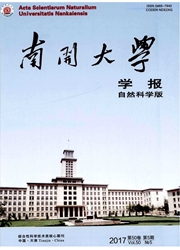

 中文摘要:
中文摘要:
选取PM2.5、PM10、SO2、NO2、O3和CO作为评价因子,并在环境空气质量标准的基础上对评价标准扩展到五级,通过建立各污染物的隶属函数和权重集,运用模糊综合评价法对2013年京津冀地区13个城市的环境空气质量进行评价,得出各个城市的环境空气质量污染水平及其污染因子的大小排序.结果表明,该区域空气质量状况总体较差,石家庄的首要污染物为PM10,张家口和承德对大气污染贡献率最大的污染因子为O3,其他城市最主要的污染物均为PM2.5,可吸入颗粒物仍是该区域对大气污染影响最大的因子.评价结果能够较客观地反映该地区环境空气质量优劣状况,从而为改善和治理大气污染提供理论依据.
 英文摘要:
英文摘要:
PM2.5, PM10, SO2, NO2, O3 and CO were selected as evaluation factors, and the evaluation criteria are extended to five levels on the basis of the ambient air quality standards. Through establishing the weight set and membership functions of various contaminants, the fuzzy comprehensive evaluation method is used for the assessment ambient air quality of 13 cities in Beijing, Tianjin-Hebei region in 2013,then all the city’s ambient air quality pollution levels and the sequence of the pollution factors are drawn.The results show that the overall air quality in this region is poor. The primary pollutant of Shijiazhuang is PM10, the atmospheric pollution factor of largest contribution in Zhangjiakou and Chengde is O3, and the most important pollutant in other cities is PM2.5. In general, the respirable particulate matter remains the most influential atmospheric pollution factor in this region. The evaluation results of this paper can reflect the merits of the region’s ambient air quality situation more objectively, which can provide a theoretical basis for the improvement and control of air pollution.
 同期刊论文项目
同期刊论文项目
 同项目期刊论文
同项目期刊论文
 期刊信息
期刊信息
